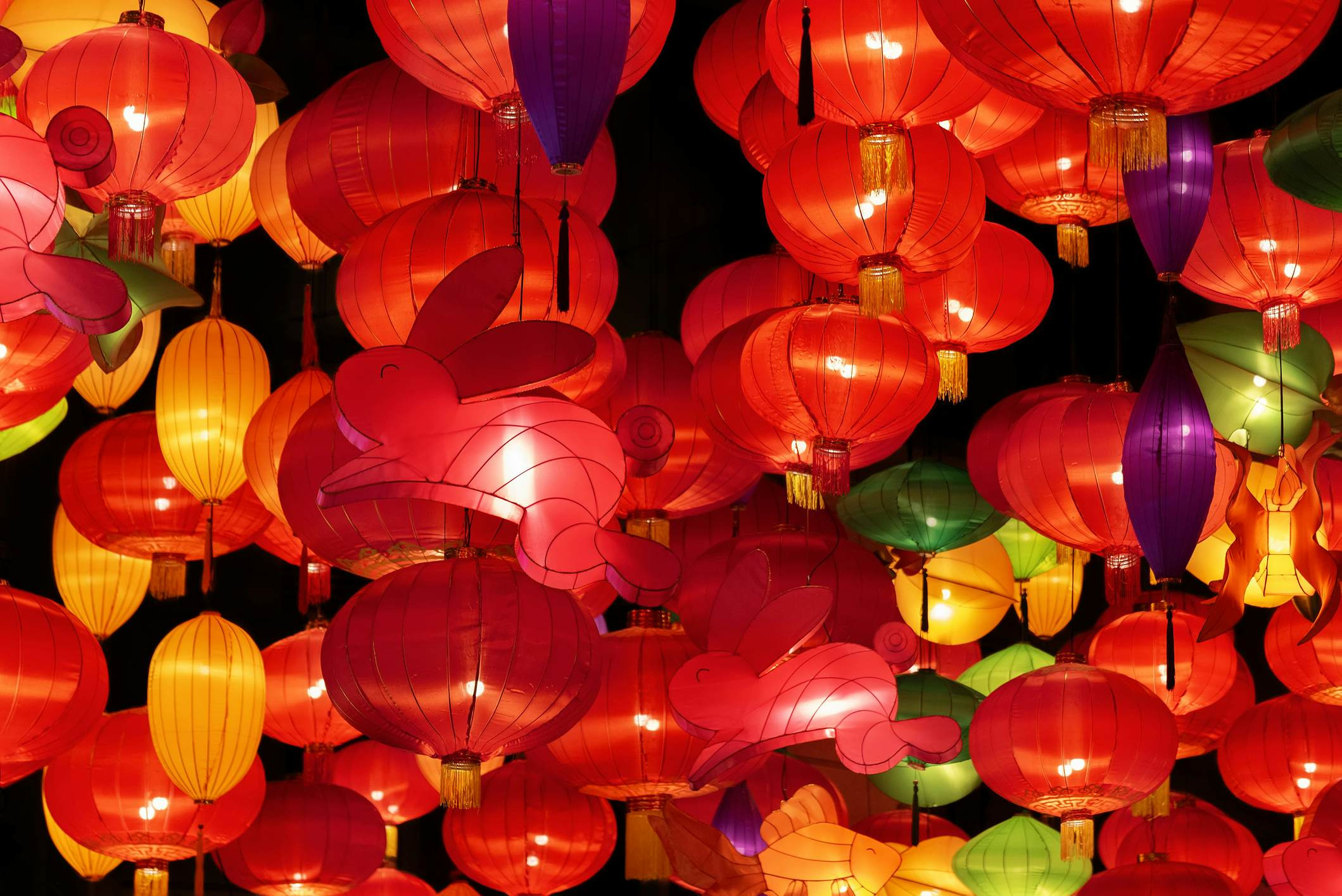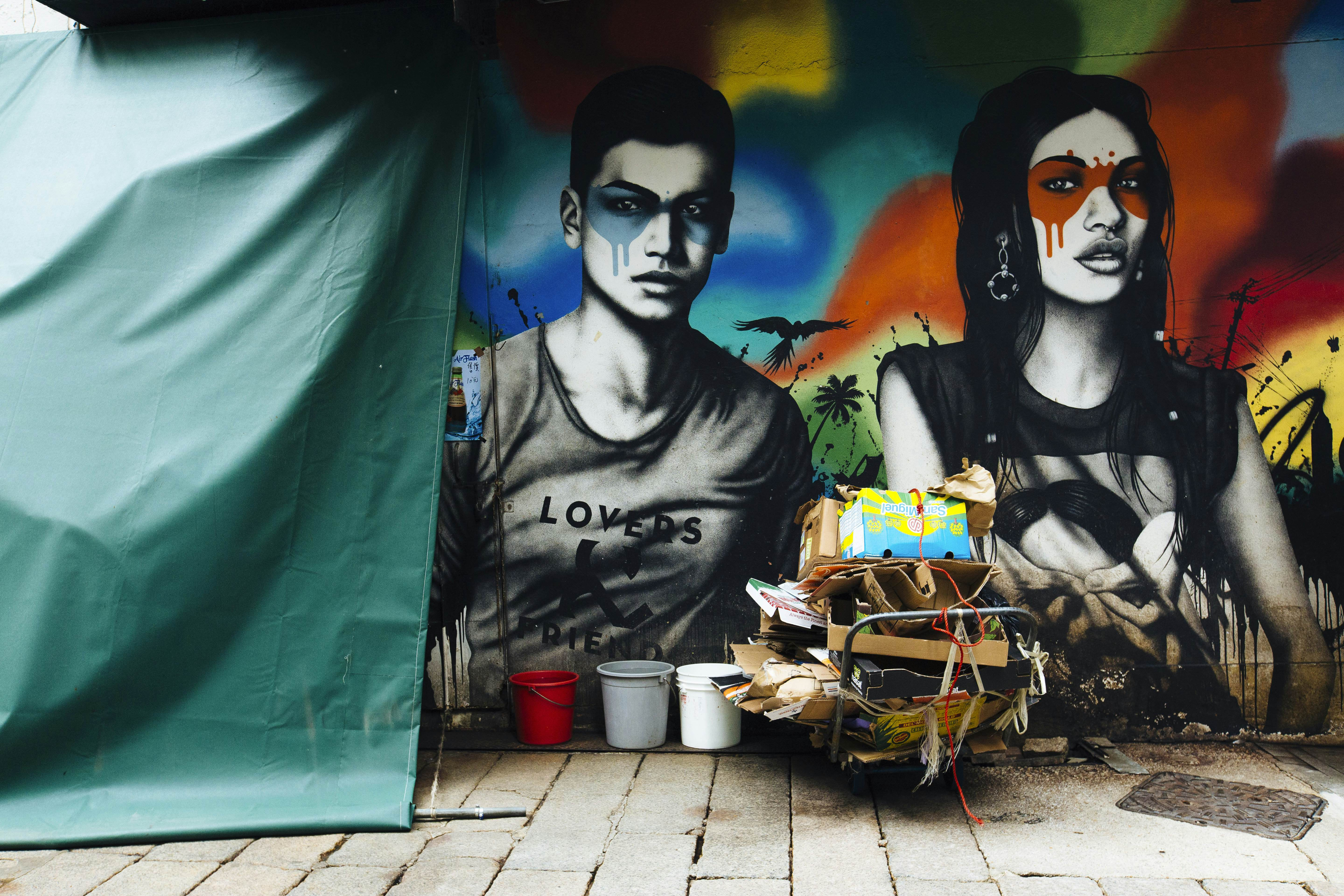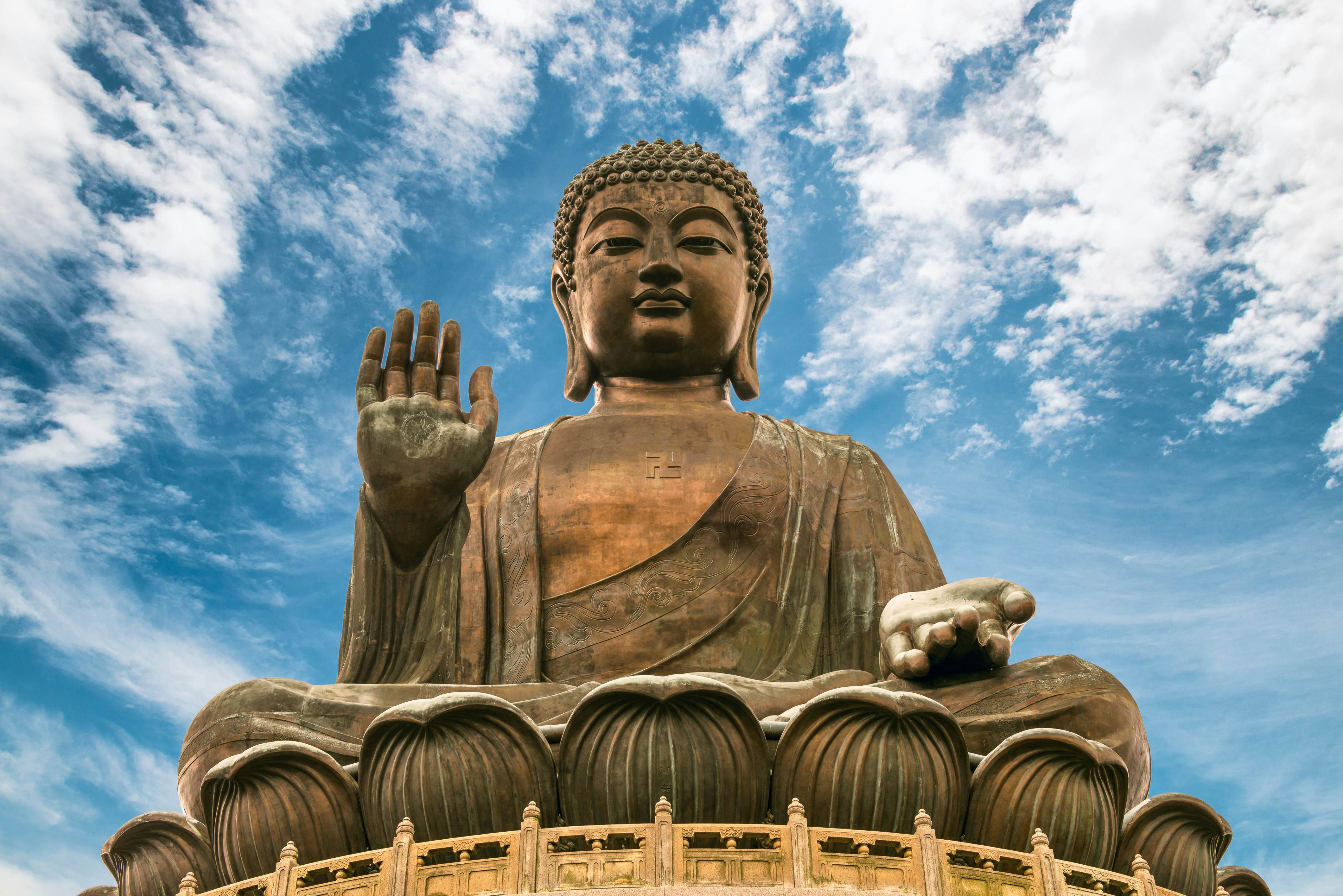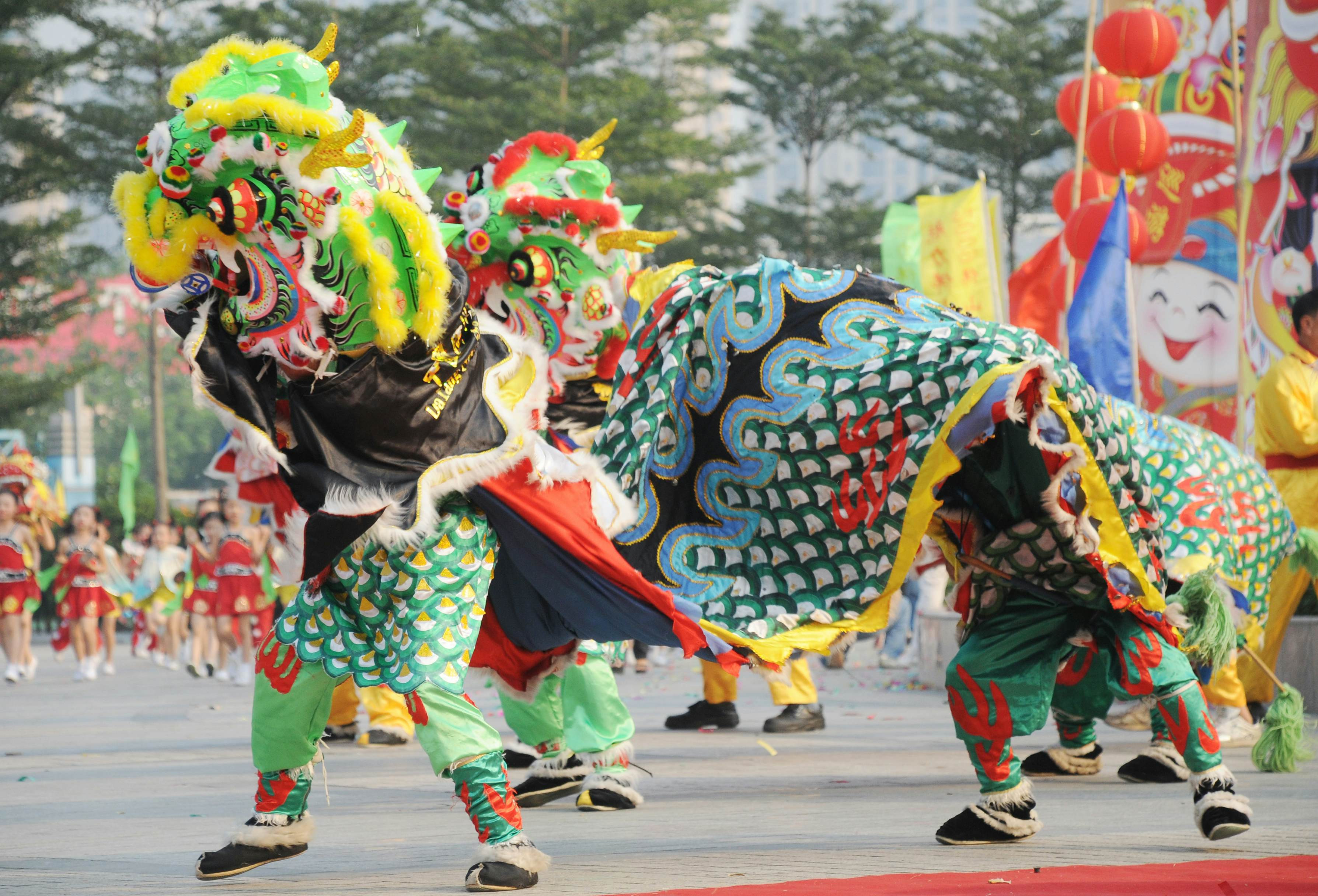Are you planning a trip to Hong Kong and wondering about the optimal time to visit? Hong Kong, a vibrant city blending Eastern and Western cultures, offers unique experiences year-round. Let SIXT.VN be your guide to discovering the perfect season for your Hong Kong adventure. With SIXT.VN, planning your trip is seamless, ensuring you experience the best of this dynamic destination with reliable travel solutions and expert advice. Consider SIXT.VN for your airport transfer, hotel booking, sightseeing tickets, and travel consultation.
1. What is the Best Time of Year to Visit Hong Kong for Sightseeing?
The best time for sightseeing in Hong Kong is during the fall (October to December). Fall offers low humidity and comfortable temperatures, ideal for exploring iconic landmarks like Tai Kwun, Hong Kong Wetland Park, and the city’s bustling street markets.
During the fall, temperatures typically range from 20°C (68°F) to 28°C (82°F), making it pleasant to spend long days exploring. You can visit historical sites like Tai Kwun, a revitalized heritage complex that once served as a police station and prison. According to research from the Hong Kong Tourism Board, October to December experiences the lowest rainfall and humidity levels, enhancing the comfort for outdoor activities.
For nature enthusiasts, the Hong Kong Wetland Park is a must-visit. This eco-tourism destination showcases the region’s diverse wetland ecosystems, providing a tranquil escape from the urban environment.
The street markets of Hong Kong, such as the Ladies’ Market and Temple Street Night Market, are vibrant hubs of local culture and commerce. The mild weather makes it enjoyable to browse through the myriad of goods on offer.
However, keep in mind that this is also peak season, so hotel and flight prices tend to be higher. According to data from Booking.com, hotel prices in Hong Kong can increase by 20-30% during the fall months due to high demand. Additionally, while less frequent, the typhoon season can extend into November, so it’s wise to stay updated on weather forecasts.
Despite the big city atmosphere, surfers can find good swells on Hong Kong’s beaches from October to April. Big Wave Bay, located north of Shek O Beach on Hong Kong Island, occasionally offers breaks of up to 2 meters (over 6 feet), making it a popular spot for surfing enthusiasts.
The cooler months also provide an excellent opportunity to delve into Hong Kong’s culture and explore areas beyond the city center. A cable car ride over Lantau Island takes you to the Po Lin Monastery and its impressive 250-ton bronze Buddha statue. According to the Lantau Development Advisory Committee, visitor numbers to Po Lin Monastery increase by 15% during the fall months, highlighting its popularity.
A visit to the stilt houses of Tai O offers a glimpse into the city’s traditional fishing culture. This charming village, located on the western side of Lantau Island, provides a unique perspective on Hong Kong’s maritime heritage.
2. Why Should I Consider Visiting Hong Kong During January and February?
January and February are ideal for experiencing Chinese New Year festivities. Hong Kong comes alive with vibrant festival foods, traditional culture, and public celebrations during this period.
Lunar New Year, typically falling in late January or mid-February, is Hong Kong’s most significant festival. The city is adorned with festive decorations, including kumquat trees symbolizing prosperity and red lanterns for good luck. Parades featuring lion and dragon dances fill the streets, adding to the celebratory atmosphere. According to the Hong Kong Tourism Board, Lunar New Year attracts over 500,000 visitors annually, making it a peak event for tourism.
Man Mo Temple, one of Hong Kong’s oldest and most important places of worship, is especially lively during the Lunar New Year. The temple provides a serene escape from the bustling city and offers a glimpse into Hong Kong’s spiritual traditions.
For a unique Chinese New Year experience, thousands of Taoist followers gather at the Wong Tai Sin Temple in Kowloon to place incense sticks before a painting of the Great Immortal Wong, seeking good luck for the year ahead. The Wong Tai Sin Temple is renowned for its beautiful architecture and tranquil gardens.
Victoria Harbour is the centerpiece of the organized Lunar New Year celebrations, hosting a dazzling fireworks display that lights up the skyline. Traditional lion and dragon dances weave through the streets, and a holiday spirit pervades, with bustling flower markets and colorful parades in Tsim Sha Tsui. The fireworks display at Victoria Harbour is one of the most iconic events of the Lunar New Year.
February also marks the start of the Hong Kong Arts Festival, extending into March. This world-class event offers a feast of music and performing arts, from classical music to contemporary dance performances. Big crowds gather at Kowloon’s East Tsim Sha Tsui waterfront promenade to enjoy the entertainment. The Hong Kong Arts Festival is a premier cultural event that attracts artists and audiences from around the world.
However, hotel prices can skyrocket during Lunar New Year, often doubling or tripling due to high demand. Many shops and restaurants close on the first and second days of the Lunar New Year, and some stay closed even longer as owners take time off to celebrate with relatives. The closure of businesses during this period can impact the availability of services for tourists.
 Lanterns light up the night sky in Hong Kong during the Mid-Autumn Festival.
Lanterns light up the night sky in Hong Kong during the Mid-Autumn Festival.
3. What Arts and Cultural Festivals Can I Experience in Hong Kong from March to May?
March to May is the best time to enjoy fine arts and cultural festivals. The weather gradually warms as summer approaches, and the city hosts a variety of creative events.
From March to May, average temperatures range between 20°C (68°F) and 26°C (79°F). The rainy season begins in March and continues until September, so be prepared for occasional showers. According to the Hong Kong Observatory, rainfall averages around 150mm per month during this period.
Hotel prices from March to May are lower than in the peak season during Chinese New Year but can still be moderately expensive as the weather improves and more tourists arrive. Booking in advance is recommended to secure better rates.
Spring is the peak season for arts and culture in Hong Kong, with March often called “Super March” due to the abundance of creative events. The Hong Kong Arts Festival, which starts at the end of February, reaches its peak in March with widespread music and performing arts events. This festival showcases a diverse range of performances, including classical music, opera, theater, and dance.
Later in the month, the annual HKWalls street art and mural festival transforms districts like Wan Chai, Central, and Sheung Wan into colorful canvases. Street artists from all over the world participate, creating stunning murals and installations. According to HKWalls, the festival attracts over 100 artists and 50,000 visitors each year.
The Hong Kong International Film Festival takes place over two to three weeks in March and April, screening hundreds of art-house and award-winning films from Asia and around the world. This festival is a major event for film enthusiasts, showcasing a diverse range of cinematic works.
Around the same time, the Hong Kong Convention and Exhibition Centre becomes the epicenter of the international art scene during Art Basel Hong Kong. This event attracts collectors, curators, and art professionals for a three-day showcase of contemporary art. According to Art Basel, the Hong Kong edition features over 200 leading galleries from around the world.
In May, the Affordable Art Fair offers a more accessible and budget-friendly platform for beginners looking to start collections. This fair features a wide range of contemporary art at affordable prices, making it an excellent opportunity for new collectors.
Spring also brings some of Hong Kong’s most unique cultural festivals. Usually held in the middle of May, the Cheung Chau Bun Festival is a four-day extravaganza of parades, events, and dances. The highlight is the “bun scrambling competition,” when attendees climb huge towers of steamed buns at midnight on the third day of the festival. According to the Leisure and Cultural Services Department, the Cheung Chau Bun Festival attracts over 60,000 visitors each year.
Another important event is the Tin Hau Festival in April or May, celebrating the Goddess of the Sea with lively temple ceremonies, traditional dances, opera, and parades, particularly in New Kowloon. The Tin Hau Festival is a significant event for the fishing community, honoring the goddess who protects them at sea.
Beyond the cultural bonanza, this is a good time to take advantage of the great weather by climbing Victoria Peak. Reached by the gravity-defying Peak Tram, the summit offers one of the world’s most iconic views. The Peak Tram provides a scenic ride to the top of Victoria Peak, offering panoramic views of Hong Kong’s skyline and harbor.
4. What are the Advantages of Visiting Hong Kong in June and July?
June and July offer smaller crowds if you can withstand the weather. This is the low season for tourism, with fewer visitors at major attractions.
Summer in Hong Kong is characterized by hot, damp, and unpredictable weather, with temperatures ranging from 28°C (82°F) to 32°C (90°F) and humidity levels pushing 80 percent. Sudden downpours and occasional tropical storms keep tourists – and even locals – away. According to the Hong Kong Observatory, June and July are among the wettest months of the year.
But for those willing to brave the elements, the inclement weather means fewer tourists at major attractions. This is a good time for quieter day trips to Hong Kong’s surprisingly lush green outdoor spaces, provided you come prepared with an umbrella or raincoat. The reduced crowds also mean shorter waiting times at popular attractions.
Top of the crop when it comes to natural escapes is the Sai Kung Peninsula. This undeveloped wonderland features lush hills, secluded beaches, and dramatic coastlines, particularly in the Hong Kong UNESCO Global Geopark. Sai Kung Peninsula offers a range of outdoor activities, including hiking, kayaking, and swimming.
Hong Kong also has over 260 islands, large and small. Try laidback Lamma for its hippy vibes or Cheung Chau for temples, trails, and beaches. Lamma Island and Cheung Chau Island offer a more relaxed pace of life compared to the bustling city of Hong Kong.
Pick a clear, sunny day to visit Chi Lin Nunnery & Nan Lian Garden. This striking Buddhist complex is mainly outdoors, and dry weather will make all the difference for photos. Chi Lin Nunnery & Nan Lian Garden provide a tranquil escape from the urban environment.
If you need to keep cool, hit the malls. Times Square, Hysan Place, Pacific Place, SOGO, and Lee Garden Two provide powerful air conditioning as well as retail therapy. These malls offer a wide range of shopping and dining options.
Families can also cool off at Ocean Park, Hong Kong’s original amusement park. It is packed with thrilling waterslides and has a giant wave pool. There’s more theme park fun at Hong Kong Disneyland, home of the world’s first Frozen-themed ride zone. Ocean Park and Hong Kong Disneyland offer a variety of attractions and entertainment for visitors of all ages.
Summer also brings the Dragon Boat Festival in June. This event draws the world’s best dragon-boaters to Hong Kong for three days of intense racing and partying at Victoria Harbour. Stanley Beach, Tai-O, and Aberdeen also host major races, with more than 20 dragon-boat races taking place between May and July. The Dragon Boat Festival is a vibrant celebration of Chinese culture and tradition.
 A street art mural in Hong Kong.
A street art mural in Hong Kong.
5. What Should I Know About Typhoon Season in Hong Kong (July to September)?
July to September is typhoon season. Tropical storms can bring heavy rain and cause disruptions to travel and outdoor activities.
Tropical storms, known locally as typhoons, make landfall in Hong Kong around seven times per year, usually between July and September. However, storms can strike anytime from May to November. These storms can last just a few hours or several days, bringing heavy rain and sometimes causing ferries and flights to be canceled and tourist attractions to close. According to the Hong Kong Observatory, the peak typhoon season is from July to September.
Occasionally, a tropical storm can cause more significant disruption. In September 2023, Typhoon Haikui brought more than 16 hours of heavy rainfall to Hong Kong, causing flooding and landslides. If you visit during the typhoon season, monitor weather reports and follow local advice in the event of severe weather conditions.
It is advisable to purchase travel insurance that covers disruptions due to typhoons. Also, it’s essential to stay informed about weather updates through local news channels and the Hong Kong Observatory.
Even with the potential for typhoons, Hong Kong has well-established procedures for managing these events, ensuring public safety. Buildings are designed to withstand strong winds, and emergency services are well-prepared to respond to any incidents.
Choosing the Best Time to Visit Hong Kong: A Summary
To help you decide when to visit, here’s a summary of the pros and cons of each season:
| Season | Pros | Cons |
|---|---|---|
| Fall (Oct-Dec) | Mild weather, low humidity, ideal for sightseeing | Peak season, higher prices, potential for late-season typhoons |
| Winter (Jan-Feb) | Chinese New Year festivities, cultural experiences | High hotel prices during Lunar New Year, some closures |
| Spring (Mar-May) | Fine arts and cultural festivals, pleasant temperatures | Rainy season, moderately expensive hotels |
| Summer (Jun-Jul) | Smaller crowds, quieter day trips, Dragon Boat Festival | Hot and humid weather, unpredictable rain, potential for tropical storms |
| Typhoon Season (Jul-Sep) | Fewer tourists, lower prices | High chance of typhoons, outdoor activities may be disrupted |
How SIXT.VN Can Enhance Your Trip to Hong Kong
No matter when you choose to visit Hong Kong, SIXT.VN offers a range of services to make your trip seamless and enjoyable:
- Airport Transfers: Start your trip stress-free with reliable and comfortable airport transfer services.
- Hotel Booking: Find the perfect accommodation with a wide selection of hotels to suit your budget and preferences.
- Sightseeing Tickets: Book tickets to popular attractions in advance and skip the lines.
- Travel Consultation: Get expert advice and personalized travel plans tailored to your interests.
 Tian Tan Buddha at Po Lin Monastery in Hong Kong.
Tian Tan Buddha at Po Lin Monastery in Hong Kong.
Exploring Hong Kong: Key Attractions by Season
To make the most of your visit, here’s a guide to key attractions that are best enjoyed during different seasons:
| Attraction | Best Time to Visit | Description |
|---|---|---|
| Victoria Peak | Spring (Mar-May) or Fall (Oct-Dec) | Iconic viewpoint offering panoramic views of Hong Kong’s skyline and harbor. |
| Po Lin Monastery & Big Buddha | Fall (Oct-Dec) | Famous monastery and giant bronze Buddha statue on Lantau Island. |
| Tai O Fishing Village | Fall (Oct-Dec) or Summer (Jun-Jul) | Traditional stilt houses and fishing culture on Lantau Island. |
| Hong Kong Wetland Park | Fall (Oct-Dec) | Eco-tourism destination showcasing diverse wetland ecosystems. |
| Street Markets (Ladies’ Market, Temple Street) | Fall (Oct-Dec) | Vibrant markets offering a wide range of goods and local experiences. |
| Man Mo Temple | Winter (Jan-Feb) during Lunar New Year | One of Hong Kong’s oldest and most important places of worship. |
| Wong Tai Sin Temple | Winter (Jan-Feb) during Lunar New Year | Temple known for its beautiful architecture and tranquil gardens. |
| Sai Kung Peninsula | Summer (Jun-Jul) | Undeveloped wonderland of lush hills, secluded beaches, and dramatic coastlines. |
| Chi Lin Nunnery & Nan Lian Garden | Summer (Jun-Jul) | Striking Buddhist complex offering a tranquil escape from the urban environment. |
| Ocean Park | Summer (Jun-Jul) | Amusement park with thrilling waterslides and a giant wave pool. |
| Hong Kong Disneyland | Summer (Jun-Jul) | Theme park featuring the world’s first Frozen-themed ride zone. |
Tips for Traveling to Hong Kong
- Visa Requirements: Check visa requirements based on your nationality before traveling. Many nationalities can enter Hong Kong visa-free for a certain period.
- Currency: The local currency is the Hong Kong Dollar (HKD). Credit cards are widely accepted, but it’s useful to have some cash for smaller establishments and street markets.
- Language: The official languages are Cantonese and English. English is widely spoken in tourist areas.
- Transportation: Hong Kong has an efficient public transportation system, including the MTR (subway), buses, trams, and ferries. The Octopus card is a convenient way to pay for public transportation.
- Local Customs: Be respectful of local customs and traditions. Tipping is not customary but is appreciated for good service.
 Dancers fill the streets with color during Lunar New Year in Hong Kong.
Dancers fill the streets with color during Lunar New Year in Hong Kong.
SIXT.VN: Your Partner for an Unforgettable Hong Kong Adventure
Planning a trip to Hong Kong can be overwhelming, but with SIXT.VN, you can rest assured that every detail is taken care of. From airport transfers to hotel bookings and sightseeing tickets, SIXT.VN offers comprehensive travel solutions to make your journey seamless and unforgettable.
Ready to explore the vibrant city of Hong Kong? Visit SIXT.VN today to book your travel services and start planning your dream vacation.
Address: 260 Cau Giay, Hanoi, Vietnam
Hotline/Whatsapp: +84 986 244 358
Website: SIXT.VN
Frequently Asked Questions (FAQ) About the Best Time to Travel to Hong Kong
- When is the cheapest time to visit Hong Kong?
- The cheapest time to visit Hong Kong is typically from mid-May to early September, and after the Lunar New Year rush in January and February.
- When is the most crowded time to visit Hong Kong?
- The most crowded times are during Chinese holiday periods such as the National Day holiday (around October 1), Labour Day (in the first week of May), and the Lunar New Year (in late January or early February).
- What is the weather like in Hong Kong in the fall?
- The fall months (October to December) offer low humidity and temperatures hovering between 20°C (68°F) to 28°C (82°F), making it ideal for sightseeing.
- What should I pack if I’m visiting Hong Kong in the summer?
- Pack light, breathable clothing, an umbrella or raincoat, and sunscreen. Stay hydrated and consider bringing a portable fan to cope with the heat and humidity.
- Are there any major events or festivals in Hong Kong during the spring?
- Yes, spring is the peak season for arts and culture in Hong Kong, with events like the Hong Kong Arts Festival, HKWalls street art festival, and the Hong Kong International Film Festival.
- What are some indoor activities I can do in Hong Kong during the rainy season?
- Visit shopping malls like Times Square, Hysan Place, and Pacific Place, explore museums, or enjoy a traditional dim sum meal.
- How reliable is public transportation in Hong Kong during typhoon season?
- Public transportation may be disrupted during typhoons. It’s important to monitor weather reports and follow local advice.
- What are some must-visit attractions in Hong Kong for first-time visitors?
- Victoria Peak, Po Lin Monastery & Big Buddha, and the street markets are must-visit attractions.
- What are some unique cultural experiences I can have in Hong Kong?
- Participate in the Cheung Chau Bun Festival, visit the Wong Tai Sin Temple during Lunar New Year, or explore the traditional stilt houses of Tai O.
- How can SIXT.VN help me plan my trip to Hong Kong?
- SIXT.VN offers airport transfers, hotel bookings, sightseeing tickets, and travel consultation services to make your trip seamless and enjoyable.



